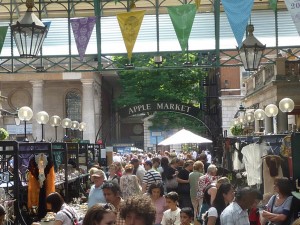Competition amongst buskers
 In the models of perfect and monopolistic competition, the long-run equilibrium involves firms making zero supernormal profit. The key assumption driving this outcome is that supernormal profits in the short run attract new entrants to the market.
In the models of perfect and monopolistic competition, the long-run equilibrium involves firms making zero supernormal profit. The key assumption driving this outcome is that supernormal profits in the short run attract new entrants to the market.
Increased competition then results in lower prices for consumers and firms’ profits fall. Therefore, an important question is how long does it take for this process to take place?
In a recent post on the Freakonomics blog, Daniel Hamermesh describes a situation in which he was actually able to observe this adjustment process taking place amongst buskers in the centre of Madrid.
This interesting example illustrates that, at least in some cases, this process can start even before entry occurs. This is because incumbents are able to make adjustments to their existing strategies, in the case of the buskers by changing their location. Consequently, profitable opportunities start to be eroded away very quickly.
Perfect competition Chillin’Competition blog, (24/10/11)
Questions
- What are the assumptions of the model of monopolistic competition?
- What is the difference between monopolistic and perfect competition?
- Does the market for buskers fit well with the assumptions of monopolistic competition?
- In this market what might be the benefits for consumers of increased competition?
- What are the key strategies incumbents might use in this market?
- How long do you think entry might take in this market?